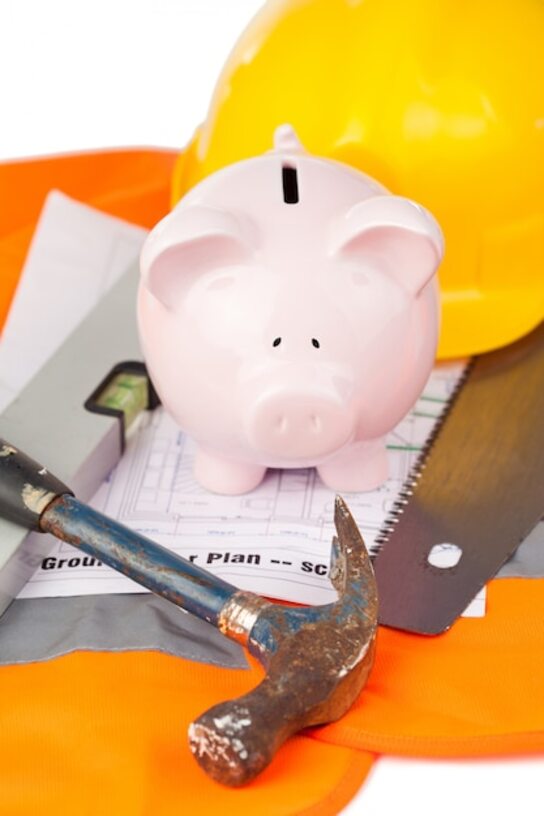Build your ideal home with savings tailored to your goals.

Building your ideal home doesn't have to be an unattainable dream. With a savings plan tailored to your goals, you can transform that desire into a tangible reality. In this article, I will guide you along the path of smart and strategic saving, so that every colón you save becomes a brick in your future home. Discover how setting clear and realistic goals can make the difference between wishing and achieving. It's time to take the first step towards the house of your dreams!
1. Define your ideal home: features and needs
Defining your ideal home is the first fundamental step on the path to building a space that truly resonates with your needs and lifestyle. Before you start saving, take some time to reflect on the features you consider essential: do you prefer a spacious house with multiple bedrooms or a cozy apartment in the center? Would you like to have a garden to enjoy the outdoors, or do you value proximity to services and transportation more? Establishing these priorities will not only help you visualize your home, but it will also be essential for setting a realistic budget in line with your goals.
Once you have clear characteristics of your ideal home, it's time to identify your specific needs. Consider factors such as the number of people who will live in the house, your daily habits, and any special requirements you may have. For example, if you work from home, a dedicated office space may be crucial; while a spacious kitchen might be important if you enjoy cooking or hosting guests. By understanding both what you desire and what you need, you can create a more effective savings plan tailored to your personal goals. This clarity will not only motivate you during the saving process but will also allow you to make informed decisions when choosing between available options in the market.
2. Set a realistic budget for your project.
Establishing a realistic budget is essential to ensure that your construction project stays on track. Before you start dreaming about finishes and decor, it's crucial to sit down and assess your personal finances. Make a detailed list of your monthly income and expenses, and identify how much you can allocate to savings without compromising your quality of life. This first step will give you a clear view of what you can truly invest in building your ideal home, avoiding unpleasant surprises later on.
Once you have a clear idea of how much you are willing to save, it's time to break that amount down into different categories: materials, labor, permits, and contingencies. This will not only help you better visualize the total cost of the project, but it will also allow you to prioritize what really matters to you. Don't forget to include a margin for unforeseen expenses; additional costs can always arise during construction. With a well-planned budget tailored to your goals, you will be much closer to seeing how those bricks turn into the walls of the home you have dreamed of.
3. Effective strategies for saving monthly
Effective strategies for saving monthly are essential to make your dream of building the ideal home a reality. One of the first actions you can take is to create a clear and detailed budget. Setting a limit on your monthly expenses will allow you to identify areas where you can cut back. Consider tracking your expenses for a month to see where you are investing your money and adjust your spending habits accordingly. By prioritizing your needs and eliminating unnecessary expenses, you will be able to allocate more funds to your savings for the house.
Another effective strategy is to automate your savings. Set up automatic transfers from your checking account to a specific savings account intended for building your home. This not only simplifies the process but also ensures that you save regularly without having to think twice about it. Additionally, consider setting realistic monthly savings goals and breaking them down into small amounts; this will make it more manageable and motivating to meet each goal achieved, gradually turning your effort into the resources needed to make that architectural dream a reality.
4. Digital tools for financial planning
Financial planning has become more accessible thanks to digital tools, which offer a variety of options to help users manage their money effectively. Apps like Mint, YNAB (You Need A Budget), and PocketGuard allow for tracking expenses, setting budgets, and establishing specific savings goals for building the ideal home. These platforms not only make it easier to visualize your finances in real-time, but they also provide personalized advice based on your spending habits, which can be crucial for reaching your desired goal. By using these tools, you can make informed decisions that bring you closer to your dream home.
In addition to financial management applications, there are online calculators and specialized software that can help you project the total cost of building or buying your home. These tools allow you to simulate different financial scenarios and assess how much you should save monthly to meet your goals within a specific timeframe. This way, you can adapt your strategies according to market fluctuations or changes in your income. Incorporating these technologies into your financial plan not only optimizes the saving process but also adds an extra level of motivation by clearly visualizing the path to your future home.
5. The importance of an emergency fund in construction
Building an ideal home is a process that goes beyond simply gathering the necessary funds to acquire materials and labor. It is essential to have an emergency fund, as unforeseen events can arise at any stage of the project: from additional costs due to design changes to unexpected issues with the land conditions. Having a financial cushion will allow you to face these challenges without compromising your initial budget, ensuring that each stage of construction is carried out as planned and avoiding financial stress. Moreover, an emergency fund not only provides peace of mind during the construction process but can also be a valuable tool for maintaining the quality of the work done. If urgent situations arise, such as the need to repair damages or improve safety aspects, having available resources will enable you to make informed and appropriate decisions without sacrificing the standards you desire for your home. By establishing this fund as an integral part of your financial planning from the outset, you will be building not only a house but also a safe and welcoming environment for you and your family.
6. Financing options: available credits and subsidies
When considering the construction of your ideal home, it is essential to explore the various financing options available that can facilitate this process. Mortgages are a popular and accessible alternative, offering competitive interest rates and flexible terms that align with your payment capacity. Researching different financial institutions will allow you to find the most favorable option, aligned with your savings goals. Additionally, it is advisable to review the requirements of each institution to secure the best possible deal and thus maximize your investment in your future home.
Another valuable resource is the subsidies offered by governments and non-profit organizations, designed to support those looking to build or acquire their home. These subsidies can significantly reduce the total cost of the project, allowing you to allocate more resources to other important aspects such as interior design or purchasing furniture. Stay informed about the calls and programs available in your area; often, these benefits go unnoticed but can be the key to turning your dream into reality without compromising your savings. With a proactive approach to the right financing, you will be one step closer to realizing that dream home.
7. Practical tips to reduce expenses in the saving process
Reducing expenses is a fundamental step in the savings process, and there are several strategies you can implement without compromising your quality of life. One of the most effective ways is to conduct a detailed analysis of your consumption habits. Identify unnecessary expenses that leak into your monthly budget, such as subscriptions to services you don't use or impulsive purchases. By creating a list of your fixed and variable expenses, you will be able to better visualize which areas you can cut back on and allocate those funds to savings for your future home. Additionally, consider setting a limit for your discretionary spending; this will help you stay focused on your financial goals.
Another useful technique is to look for more affordable alternatives to the services you regularly use. For example, you could switch to more efficient energy providers or less expensive transportation options. You can also opt for free or low-cost recreational activities instead of frequently going out to restaurants or cinemas. Don’t underestimate the power of teamwork with friends and family: organize book exchanges, potluck dinners, or outdoor outings that don’t require large investments. By applying these practical tips, every colón saved will bring you one step closer to building the ideal house you have always wanted.
8. Stay motivated: celebrate your small and big financial achievements.
Maintaining motivation on your path to the ideal home is essential. One of the most effective ways to do this is to celebrate your achievements, both small and large. Every time you reach a savings goal, no matter how small, take a moment to acknowledge your effort. Whether you have reduced expenses in a specific category or earned additional income, every step counts and deserves to be celebrated. These small victories not only provide you with satisfaction, but also fuel your determination to keep working towards your ultimate goal.
Additionally, do not underestimate the importance of significant achievements in this process. When you reach a major goal, such as gathering a considerable percentage of the cost of your future home or completing an important phase in your financial planning, treat yourself to a special recognition. This could be a dinner with friends or family to share your progress or even a small trip to disconnect and recharge. Remember that building your ideal home is a long-term project, and staying motivated along the way is crucial; by celebrating each achievement, you remind yourself why you started this journey and how each savings translates into concrete steps towards realizing that dream.



